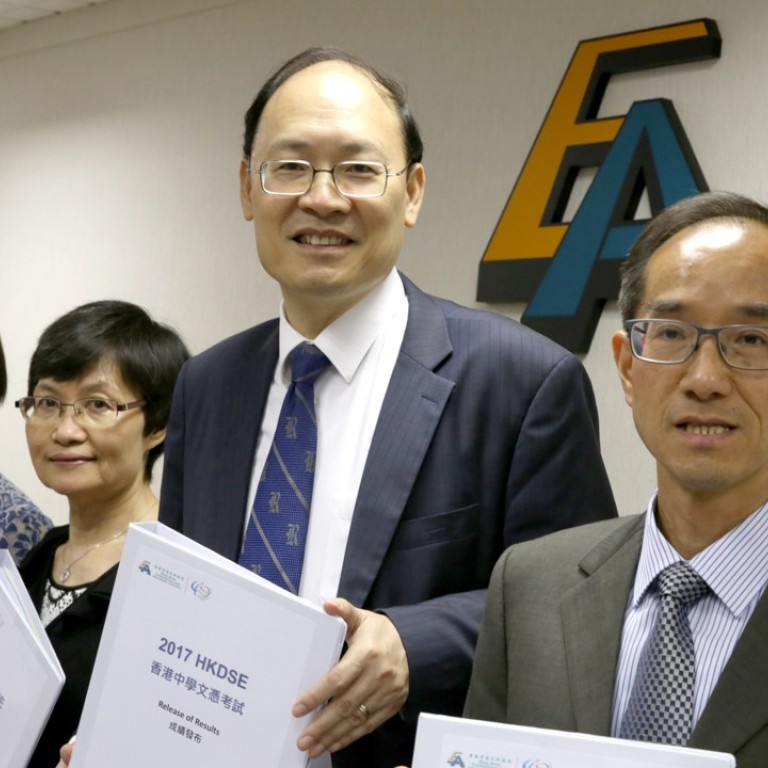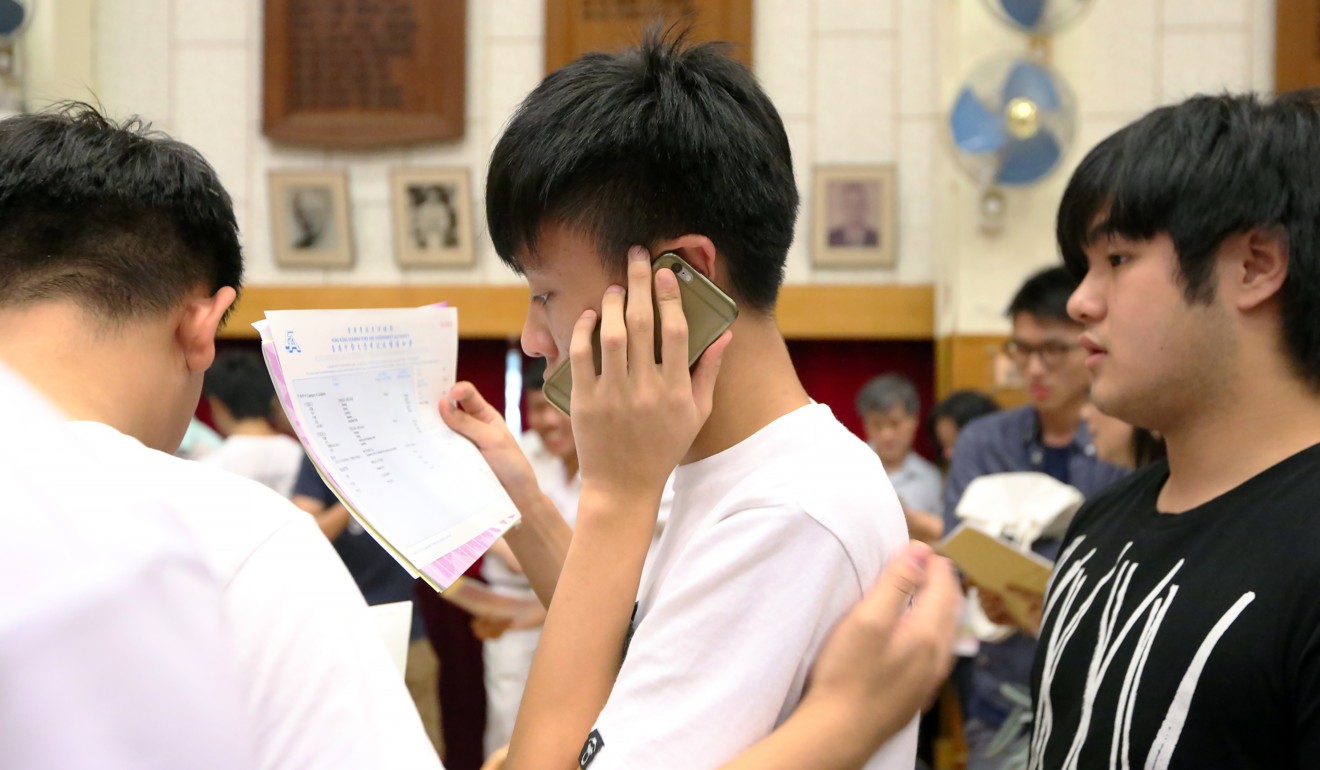
DSE scores show fewer Hong Kong students make grade for local universities
1.3 percentage point drop in number achieving minimum points tally, but nearly 6,000 will still miss out on subsidised undergraduate courses
Fewer Hong Kong students met the basic requirement to enter local universities this year despite more of them achieving top scores in the public exam.
About 41 per cent of the 51,008 day school students taking the Diploma of Secondary Education (DSE) achieved the minimum requirement for local undergraduate programmes, 1.3 percentage points down on last year, according to the Examinations and Assessment Authority.
A total of 20,885 made the cut, meaning there is a little less competition for the 15,000 subsidised first-year degree places at the eight local public universities.
Three male and three female high-fliers attained the highest level of 5** in seven subjects. Of these, one female student also got level 5** for the extended mathematics module. Two students with special educational needs attained 5** in four subjects.
Overall performance in English language was slightly worse than last year, with those attaining level 2 and above or level 3 and above falling by about three percentage points to 77 per cent and 52.2 per cent respectively among day school students.

Performance in core subjects such as Chinese language, mathematics and liberal studies were similar to last year’s. The authority announced the overall picture of the examination on Tuesday, a day before students get their results.
Around 60,300 candidates, including those at night schools, sat the examination, down from about 66,900 last year.
Despite the slight drop in the percentage of day school candidates making the grade for local undergraduate programmes, Dr Tong Chong-sze, secretary general of the authority, said the percentage was higher than between 2012 and 2015.
To get into university, students need at least a level three in Chinese and English language, and a level two in maths and liberal studies. Students get a one point for level one, and an extra point with each rising grade. So level 5** would mean seven points.
“If you have around 20 points and above, you are likely [to be able to enter public universities],” Tong said. “If you have 19 or 20 points, we will advise you to have two strings to your bow.”
As there are only 15,000 subsidised first-year university degree places in public universities, more than 5,800 students who met the basic entry requirements may have to take costly self-financing programmes.
But these students could enjoy HK$30,000 a year in subsidies if Chief Executive Carrie Lam Cheng Yuet-ngor’s proposed HK$3.6 billion boost for education spending is passed by the Legislative Council’s Finance Committee.
The oldest candidate was a 68-year-old man who sat two subjects, while the youngest were two 14-year-olds, with one taking six subjects and the other five.

